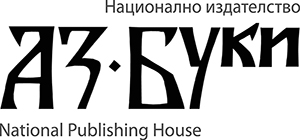Marina Kurbakova
Moscow Polytechnic University (Russia)
https://doi.org/10.53656/str2021-1-2-mix
Abstract. Distance learning is becoming more and more rooted in our life; it will not disappear after the pandemic and occupy a certain large niche in education. Nothing can replace human contact, but we can enhance the remote aspect of learning.
In our study, we use the empirical method; data collection by continuous sampling and factual activity. The theoretical research method is reflected in the subsequent modeling of the flexible trajectory in distance education.
The study has found the following results. The alternating phases of distance learning, live lectures and seminars can be planned so that for the period of live communication you need to put the maximum of theory and practice on those issues that are difficult to solve in distance learning.
To build effective work in an online university, an online platform is needed.
When performing the same type of grammar tasks on an online platform with the aim of assimilating them and further automation, the teacher saves energy for more efficient work in the webinar.
The advantages of online learning compared to traditional classes are that an absent student may later be asked to complete a task that will be automatically verified and tracked.
Taking tests and exams in the online conference mode is easier, easier than it seems if you learn to use its convenient options.
The psychophysics of some students is such that the pressure of the teacher in the class is not the best form of assimilation of the material. Having free access to the task, he can complete it at the most favorable time, at the best pace for himself, to remake it.
The disadvantages of the platform are that uncontrolled work on it can lead to an endless search by students for a collective answer to tasks, tasks, based on intuition and their mechanical execution. Do not overestimate the student’s desire to comprehend knowledge. Control here should be even more serious than in full-time classes.
The reasons for teachers’ complaints about webinars also occur for the following reasons: there was no temporary opportunity to study and even more confidently use all the features of conference applications, there was no way to connect existing developments in the field of distance and e-learning, and the advantages of mobile applications were not actively used.
The results of the study can be applied in a new environment in which teachers and educators are not predictably found with the prospect of an inevitable rooting in later life.
Keywords: distance learning; pandemics; webinars; online conferences; online platform




